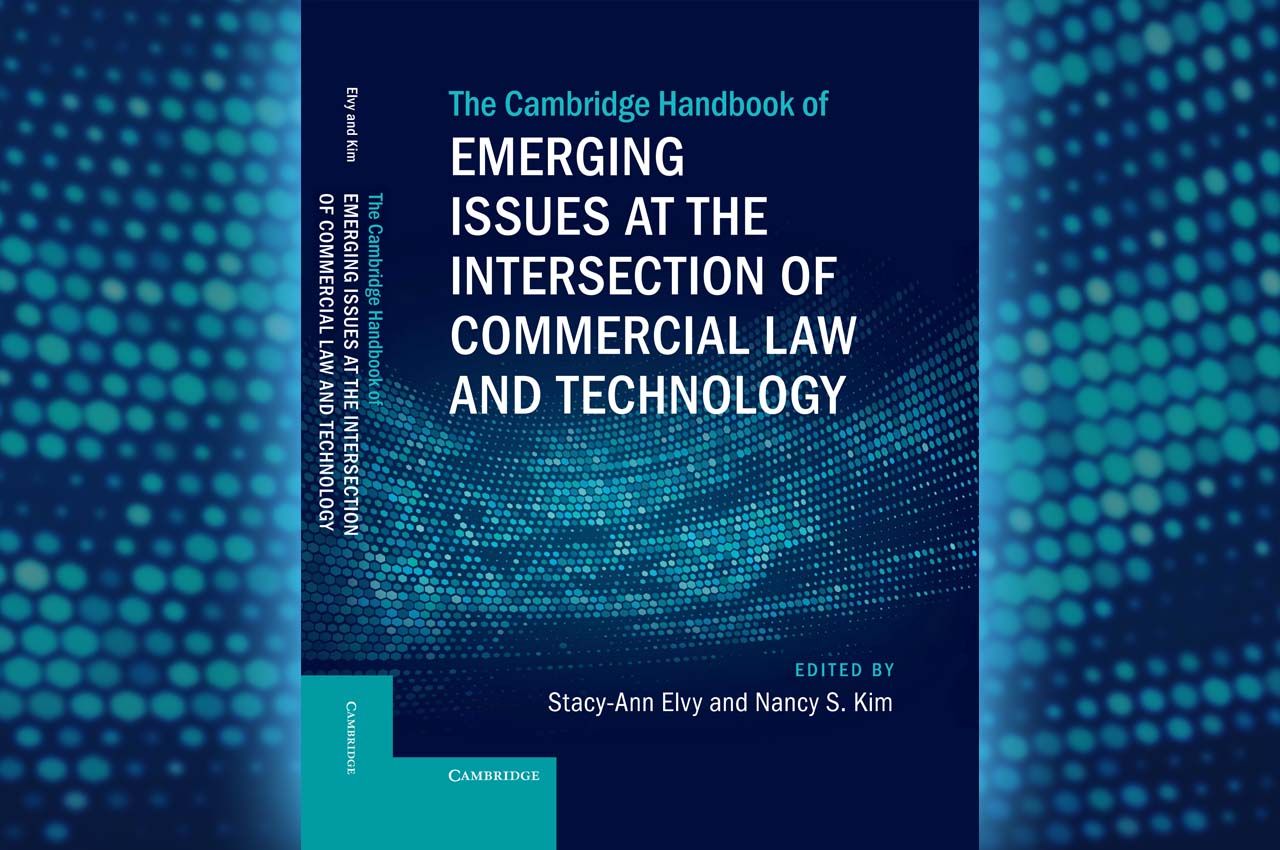Professor Kim’s New Book Examines Legal Issues Inherent in Emerging Technology

“With technology, our lives are becoming easier but also more complex,” says Nancy Kim, the Michael Paul Galvin Chair in Entrepreneurship and Applied Legal Technology and professor of law at Chicago-Kent College of Law, “and the legal issues we’re dealing with are more complex.”
Kim’s latest book project, titled The Cambridge Handbook of Emerging Issues at the Intersection of Commercial Law and Technology (Cambridge University Press 2025), was co-edited with University of California, Davis School Professor of Law Stacy-Ann Elvy. The pair decided to collaborate on the book after recognizing the gaps in knowledge about the laws surrounding new technologies.
“Someone might have an expertise in privacy, but they don’t necessarily have an expertise in commercial law. The commercial law folks don’t necessarily have an expertise in privacy or intellectual property and so forth,” says Kim. “Yet the issues that we’re confronting require expertise in these various areas of law and an understanding of how these different areas of law intersect and interrelate."
Kim, who is the inaugural Michael Paul Galvin Chair in Entrepreneurship and Applied Legal Technology, was eager to work with experts across disciplines. She recruited Illinois Tech Associate Professor of Behavioral Design Ruth Schmidt to contribute a chapter, “Behavioral Implications and Emerging Legal Issues in Innovative and Digital Product Design” which explains how design can affect social interactions and privacy.
“It’s so incredibly valuable to be part of a tech-focused institution where you have colleagues who really understand the technical side of things, the design aspects, who understand and can explain it to you, and also value what we do at the law school on the legal and policy issues,” Kim says.
Kim also teamed up with Lance Fortnow, dean of Illinois Tech’s College of Computing, to write a chapter about artificial intelligence: “Contract and Commercial Law Challenges with AI Products and Services.”
“I could not have written that chapter alone because of the technical issues” she says. “And he could not have written the chapter alone because of the legal issues. It was a joint effort.”
That chapter explains what AI is—and it highlights how much care Kim and Elvy put into keeping the content fresh, despite a constantly evolving technological landscape.
“When we first started work on this book, I don’t think ChatGPT had even come out,” she says. “Then, people were saying, ‘AI,’ but it wasn’t clear what they meant when they were tossing this term around. Sometimes they were talking about personalized ads, sometimes they were talking about robots. Now, when people say AI, they’re talking about chat bots but that, too, will change and we’ll get more specific language as we understand better the technology and the given context in which it’s used.”
Kim hopes that the book will help readers think about issues surrounding emerging technology in a well-rounded way so that they can understand not just the technology itself, but the effects the technology can have on the people using it.
“It’s disconcerting if we talk about technology only in terms of businesses and the economic benefits, without thinking about the costs to society,” she says. “And the costs should always be weighed against the benefits.”
Kim says that this cross-disciplinary work is vitally important to humanity, and she doesn’t like the idea of different academic fields being “siloed” away from each other.
“Fortunately, there are a lot of lawyers and policymakers who are thinking about the human implications of tech,” she says, “and the creators and technologists should be thinking about them as well.”



